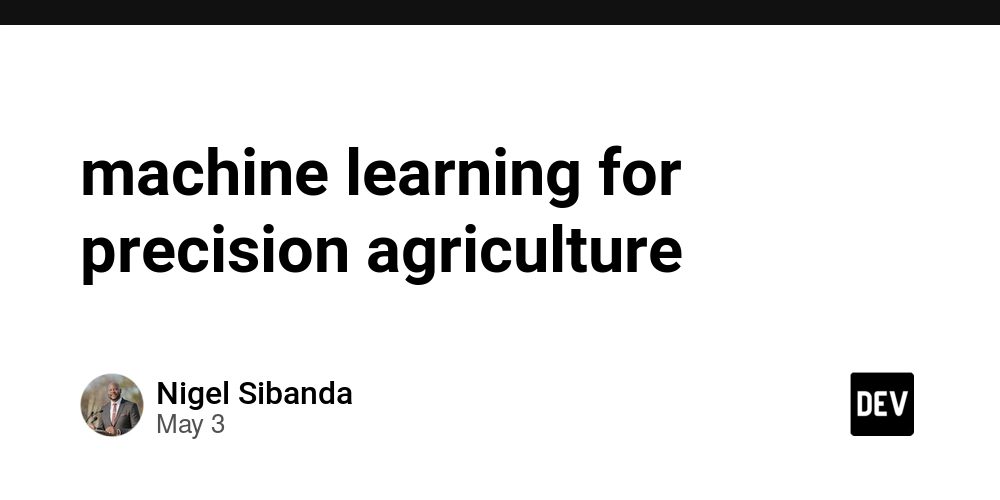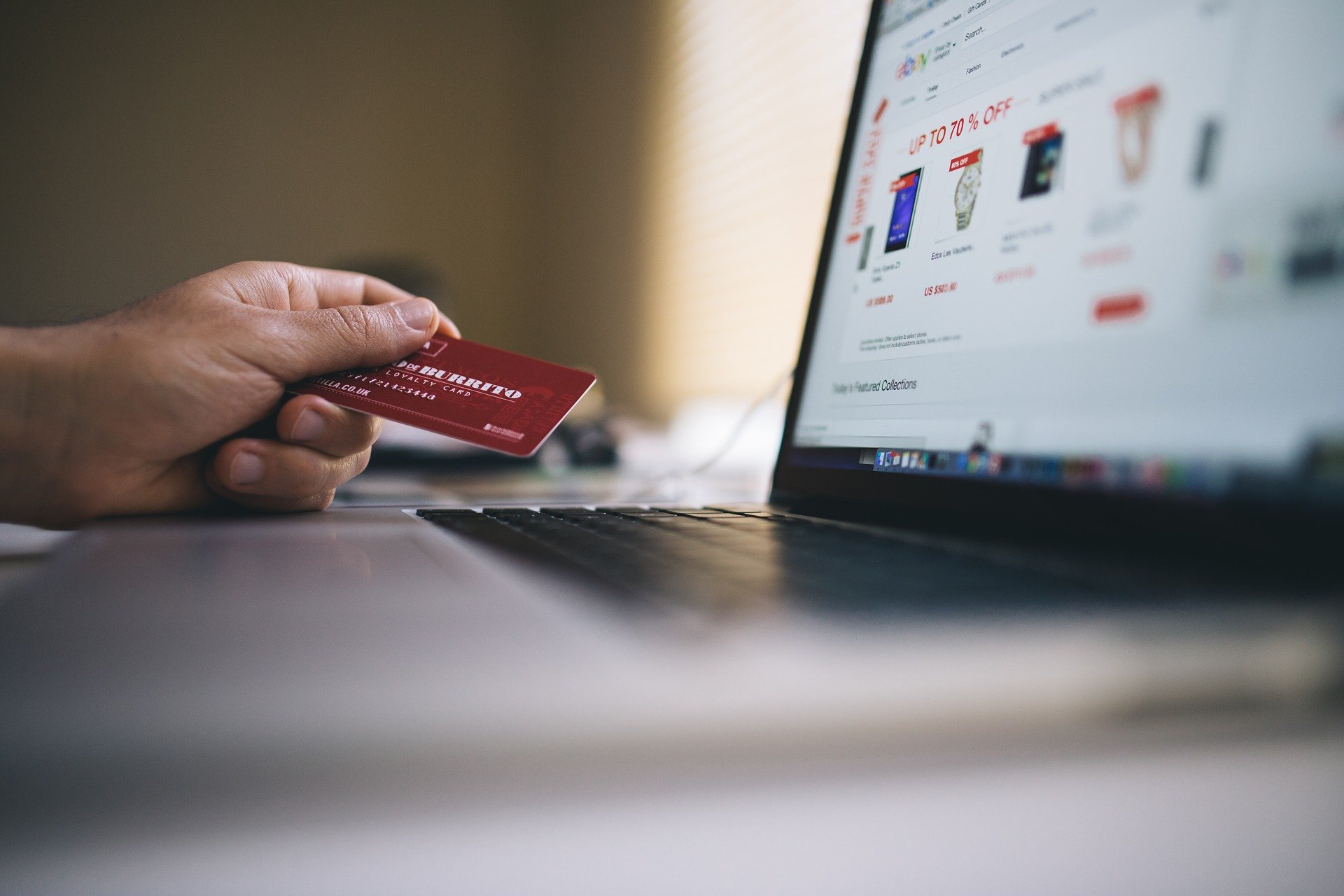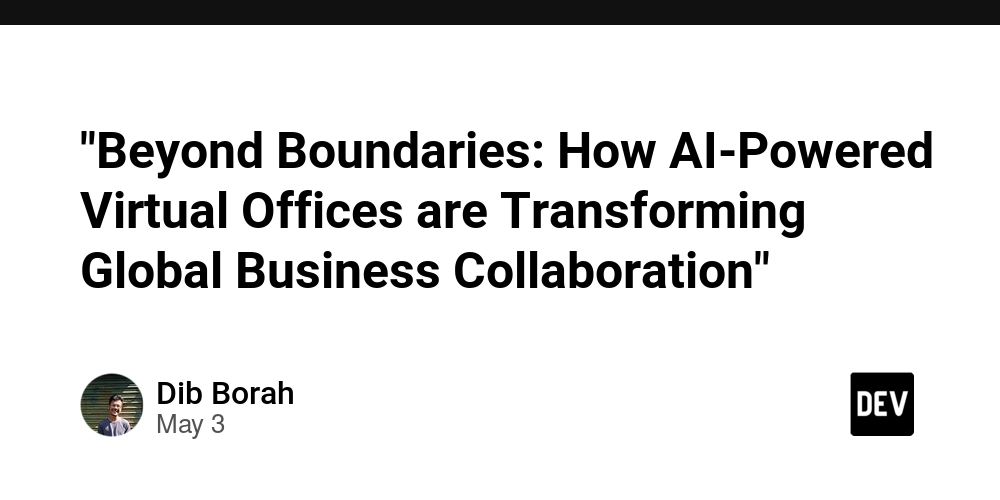Funding Blockchain Innovation in Logistics: Key Insights and Future Prospects
Abstract This post explores the exciting intersection of blockchain funding and logistics innovation. We dive into how blockchain transforms supply chains with transparency, traceability, and efficiency. In doing so, we examine the various funding sources driving these innovations—from venture capital to government grants—and discuss key stakeholders, challenges, and future prospects. With practical examples, tables, and bullet lists for clarity, we provide a holistic view that combines technical understanding with real-world applications. Readers will also find curated links to authoritative resources and related discussions on platforms like Dev.to to ensure a comprehensive grasp of the subject. Introduction Blockchain technology is revolutionizing the logistics industry. As global supply chains grow more complex, blockchain offers a decentralized solution for tracking, verifying, and securing every transaction. But innovation in blockchain does not happen in isolation—the journey is fueled by a range of funding sources, from venture capital and corporate investments to government grants and novel token sale models. In this post, we explore the funding landscape that is powering blockchain innovations in logistics, and we examine the implications for developers, investors, and logistics professionals alike. Background and Context Blockchain is a decentralized ledger technology that ensures every transaction is recorded in a secure and immutable manner. In the logistics sector, this means: Enhanced Transparency: Every movement in the supply chain is recorded and can be audited in real time. Improved Traceability: Products can be tracked from origin to destination, reducing fraud and enhancing safety. Increased Efficiency and Reduced Costs: By automating processes through smart contracts and eliminating intermediaries, blockchain reduces delays and costs. The transformation promises to enhance global supply chain efficiency. For more information on the fundamentals of blockchain, readers can refer to What is Blockchain. Historically, the logistics industry has struggled with data silos and lack of coordination among stakeholders. The advent of blockchain has addressed these issues by providing a unified and transparent platform that integrates disparate systems. Funding for these advanced systems is essential for evolution and widespread adoption. Core Concepts and Features 1. Blockchain in Supply Chain Management Blockchain’s integration into logistics offers features such as: Decentralized Ledger: Each transaction is cryptographically secured. Smart Contracts: Automated execution of agreements reduces human error. Data Integrity: Once recorded, data cannot be altered, ensuring a reliable chain of custody. 2. Diverse Funding Sources The funding for blockchain projects in logistics comes from multiple streams: Funding Source Description Example Projects / Initiatives Venture Capital (VC) Investments in startups developing blockchain solutions. ShipChain, VeChain (Equity Funding for Blockchain Startups) Accelerators/Incubators Programs offering mentorship, resources, and seed funding. Plug and Play’s Supply Chain & Logistics (Plug and Play) Corporate Investments Established logistics firms investing in blockchain to streamline operations. Maersk and FedEx via TradeLens (Maersk; TradeLens) Government Grants Funding from public bodies to support research and innovation. EU’s Horizon 2020 (Government Funding for Blockchain) Crowdfunding & Token Sales Raising capital through ICOs and token-based financing models, despite regulatory challenges. Various blockchain projects exploring token sales (Crowdfunding for Blockchain Startups) These diverse funding streams are critical for fostering innovation in an ecosystem that relies on cross-collaboration among technology providers, logistics companies, and governmental bodies. 3. Key Stakeholders The blockchain in logistics ecosystem is driven by various stakeholders: Startups and Innovators: Pioneer new solutions (e.g., ShipChain, VeChain). Logistics Corporations: Adopt blockchain for transparency and efficiency (e.g., Maersk, FedEx). Investors and Financial Institutions: Back promising projects to drive technological breakthroughs. Regulatory Bodies and Governments: Provide structure and support through policies and grants. Technology Providers: Offer robust blockchain platforms like IBM and Microsoft to power these initiatives. For a deeper dive into corporate investments and technological integrations, check out Corporate Sponsorship for Blockchain and IBM’s Blockchain Solutions for Supply Chain. 4. Funding Methodologies Funding projects in the blockchain space often leverage modern methodologies such as: Venture Capital Rounds: Target high-growth startups. Accelerator Programs: Cultivate innovation and early-stage support.

Abstract
This post explores the exciting intersection of blockchain funding and logistics innovation. We dive into how blockchain transforms supply chains with transparency, traceability, and efficiency. In doing so, we examine the various funding sources driving these innovations—from venture capital to government grants—and discuss key stakeholders, challenges, and future prospects. With practical examples, tables, and bullet lists for clarity, we provide a holistic view that combines technical understanding with real-world applications. Readers will also find curated links to authoritative resources and related discussions on platforms like Dev.to to ensure a comprehensive grasp of the subject.
Introduction
Blockchain technology is revolutionizing the logistics industry. As global supply chains grow more complex, blockchain offers a decentralized solution for tracking, verifying, and securing every transaction. But innovation in blockchain does not happen in isolation—the journey is fueled by a range of funding sources, from venture capital and corporate investments to government grants and novel token sale models. In this post, we explore the funding landscape that is powering blockchain innovations in logistics, and we examine the implications for developers, investors, and logistics professionals alike.
Background and Context
Blockchain is a decentralized ledger technology that ensures every transaction is recorded in a secure and immutable manner. In the logistics sector, this means:
- Enhanced Transparency: Every movement in the supply chain is recorded and can be audited in real time.
- Improved Traceability: Products can be tracked from origin to destination, reducing fraud and enhancing safety.
- Increased Efficiency and Reduced Costs: By automating processes through smart contracts and eliminating intermediaries, blockchain reduces delays and costs.
The transformation promises to enhance global supply chain efficiency. For more information on the fundamentals of blockchain, readers can refer to What is Blockchain.
Historically, the logistics industry has struggled with data silos and lack of coordination among stakeholders. The advent of blockchain has addressed these issues by providing a unified and transparent platform that integrates disparate systems. Funding for these advanced systems is essential for evolution and widespread adoption.
Core Concepts and Features
1. Blockchain in Supply Chain Management
Blockchain’s integration into logistics offers features such as:
- Decentralized Ledger: Each transaction is cryptographically secured.
- Smart Contracts: Automated execution of agreements reduces human error.
- Data Integrity: Once recorded, data cannot be altered, ensuring a reliable chain of custody.
2. Diverse Funding Sources
The funding for blockchain projects in logistics comes from multiple streams:
| Funding Source | Description | Example Projects / Initiatives |
|---|---|---|
| Venture Capital (VC) | Investments in startups developing blockchain solutions. | ShipChain, VeChain (Equity Funding for Blockchain Startups) |
| Accelerators/Incubators | Programs offering mentorship, resources, and seed funding. | Plug and Play’s Supply Chain & Logistics (Plug and Play) |
| Corporate Investments | Established logistics firms investing in blockchain to streamline operations. | Maersk and FedEx via TradeLens (Maersk; TradeLens) |
| Government Grants | Funding from public bodies to support research and innovation. | EU’s Horizon 2020 (Government Funding for Blockchain) |
| Crowdfunding & Token Sales | Raising capital through ICOs and token-based financing models, despite regulatory challenges. | Various blockchain projects exploring token sales (Crowdfunding for Blockchain Startups) |
These diverse funding streams are critical for fostering innovation in an ecosystem that relies on cross-collaboration among technology providers, logistics companies, and governmental bodies.
3. Key Stakeholders
The blockchain in logistics ecosystem is driven by various stakeholders:
- Startups and Innovators: Pioneer new solutions (e.g., ShipChain, VeChain).
- Logistics Corporations: Adopt blockchain for transparency and efficiency (e.g., Maersk, FedEx).
- Investors and Financial Institutions: Back promising projects to drive technological breakthroughs.
- Regulatory Bodies and Governments: Provide structure and support through policies and grants.
- Technology Providers: Offer robust blockchain platforms like IBM and Microsoft to power these initiatives.
For a deeper dive into corporate investments and technological integrations, check out Corporate Sponsorship for Blockchain and IBM’s Blockchain Solutions for Supply Chain.
4. Funding Methodologies
Funding projects in the blockchain space often leverage modern methodologies such as:
- Venture Capital Rounds: Target high-growth startups.
- Accelerator Programs: Cultivate innovation and early-stage support.
- Token Sales and ICOs: Use blockchain’s native tokens for decentralized funding.
- Partnerships and Joint Ventures: Create synergies between established firms and startups.
A bullet list summarizing key methodologies:
- Seed Funding: Boosts early-stage projects.
- Series A/B/C Funding: Scales successful startups.
- Government Grants: Encourages research and large-scale implementations.
- Token Sales/ICOs: Engage a broader investor base while navigating regulatory hurdles.
Applications and Use Cases
Use Case 1: Enhanced Transparency with TradeLens
TradeLens, a collaboration between Maersk and IBM, is a prime example of blockchain’s transformative power. By digitizing shipping logistics, TradeLens provides:
- Real-time tracking of shipments.
- Reduced paperwork and administrative overhead.
- Streamlined workflows that benefit both shippers and carriers. For more details, see TradeLens.
Use Case 2: Tokenization in Supply Chain Management
Startups like ShipChain and VeChain are harnessing blockchain to:
- Tokenize assets in the logistics chain, enabling fractional ownership and liquefied funding.
- Ensure a tamper-proof record of goods as they move through various checkpoints. Learn more about these efforts by visiting ShipChain and VeChain.
Use Case 3: Government-Backed Innovation Projects
Government funding via initiatives like Horizon 2020 supports research into blockchain applications that can optimize:
- Global supply chain operations
- Regulatory compliance and ROI tracking
- Sustainability efforts by optimizing resource usage. For further reading, refer to Horizon 2020.
Challenges and Limitations
Despite its transformative potential, blockchain adoption in logistics faces several challenges:
Technical Challenges
- Scalability: High transaction volumes may strain decentralized networks.
- Interoperability: Integrating blockchain with legacy systems can be complex.
- Security Vulnerabilities: Smart contract bugs and potential hacking remain concerns.
- Technical Complexity: Implementing new protocols requires specialized skills.
Adoption and Regulatory Challenges
- Regulatory Uncertainty: Changing policies can hinder investment.
- High Integration Costs: Replacing traditional systems is capital intensive.
- Market Volatility: Crypto-based funding often experiences significant fluctuations.
- Proving ROI: Demonstrating tangible benefits in cost savings and efficiency can be a slow process.
A bullet list summarizing challenges:
- Regulatory Uncertainty
- Scalability Issues
- Interoperability Concerns
- Technical Complexity
- Proving ROI in Legacy Systems
Strategic Limitations
- Data Privacy: While blockchain records are transparent, ensuring sensitive information remains confidential is crucial.
- Adoption Resistance: Established logistics firms may be hesitant to overhaul existing systems.
- Ecosystem Fragmentation: Multiple competing blockchain protocols can lead to fragmentation.
These challenges underscore the need for continued innovation in blockchain technologies and funding methodologies.
Future Outlook and Innovations
Looking forward, the future of blockchain in logistics is bright. Key trends include:
1. Increased Strategic Investments
As regulatory clarity improves and technology matures, more strategic investments are expected from both corporate giants and venture capital firms. This will further drive the integration of blockchain in logistics. For instance, corporate sponsorships and partnerships are paving the way for a more unified ecosystem, as detailed in Corporate Sponsorship for Blockchain.
2. Enhanced Network Interoperability
Future blockchain projects will emphasize interoperability between multiple networks, enabling better communication between diverse systems. Projects such as those discussed in Arbitrum and Blockchain Interoperability indicate a growing trend toward scalable and efficient multi-chain solutions.
3. Tokenized Incentives and Funding Mechanisms
Tokenization will continue to evolve, offering innovative funding methods such as community-driven token sales and yield farming models. This can attract both retail and institutional investors, providing an additional layer of liquidity and incentivizing participation from all ecosystem players.
4. Collaboration Between Regulators and Innovators
As regulators gain a better understanding of blockchain technologies, more supportive policies are expected. This collaboration can help address major issues such as data privacy and market volatility while ensuring consumer protection.
5. Sustainable and Ethical Practices
Investors and companies are increasingly prioritizing sustainable development. Blockchain projects focused on reducing carbon footprints and enhancing sustainability in the supply chain are expected to gain traction. For discussions on sustainable practices, check out resources like Blockchain and Renewable Energy.
Developer and Community Perspectives
The role of developer communities in shaping blockchain innovation cannot be overstated. Open-source projects and collaborative platforms are critical for advancing the technology. For insights on how developer community support unlocks new opportunities, explore The Vital Role of Developer Community Support in Open Source and Exploring Blockchain Project Funding and Token Economics.
Communities are increasingly leveraging platforms such as GitHub Sponsors to raise funds, share code, and solve technical challenges rapidly. This collaborative approach enhances not only innovation but also the speed at which new ideas are deployed in the logistics space.
Practical Tips for Implementing Blockchain in Logistics
For businesses considering the shift to blockchain, here are practical tips to navigate the process:
- Start Small: Pilot projects in specific segments of the supply chain can help assess viability.
- Collaborate: Engage with technology partners, investors, and regulatory bodies early on.
- Educate Stakeholders: Ensure that all levels of the organization understand the benefits and limitations.
- Invest in Talent: Hire or train staff with expertise in blockchain development and cybersecurity.
- Monitor Regulatory Changes: Stay updated on the evolving legal landscape to avoid compliance pitfalls.
These action items are crucial for organizations aiming to integrate blockchain smoothly with minimal disruption.
Table: Key Strategies for Blockchain Adoption in Logistics
| Strategy | Benefits | Challenges Addressed |
|---|---|---|
| Pilot Programs | Mitigates risk, tests real-world feasibility | Overcoming integration barriers |
| Multi-Stakeholder Collaboration | Enhances transparency and resource sharing | Navigating regulatory uncertainty |
| Developer Community Support | Accelerates innovation through open-source contributions | Addressing technical complexity |
| Tokenized Funding Models | Provides liquidity and aligns incentives | Mitigating market volatility and scalability |
| Sustainability Focus | Aligns with global sustainability goals | Ensuring ethical and sustainable practices |
Curated Expert Perspectives
To further enhance your understanding, consider these insightful articles from the Dev.to community:
- Unlocking the Future of Finance: The Power of Blockchain Tokenization
- Arbitrum: Pioneering Open Source in Blockchain
- Exploring Blockchain Project Funding and Token Economics: A Deep Dive
These posts provide additional context and practical examples that complement the insights shared above.
Summary and Conclusion
The journey toward integrating blockchain technology into logistics is both exciting and challenging. With its promise of enhanced transparency, improved traceability, and significant cost savings, blockchain is poised to transform supply chains on a global scale. However, realizing this potential depends on robust funding—from venture capital and corporate investments to government grants and innovative token-based platforms.
Key takeaways from this post include:
- Diverse Funding Sources: Funding is available through various channels, each addressing a different aspect of blockchain innovation.
- Key Stakeholders: Success in blockchain-driven logistics requires collaboration among startups, corporations, regulators, and technology providers.
- Challenges and Limitations: Technical issues such as scalability, interoperability, and regulatory uncertainties must be addressed.
- Future Prospects: With increasing strategic investments, improved interoperability, and growing community support, the future of blockchain in logistics is promising.
- Practical Action Steps: Businesses must start with pilot programs, invest in talent, collaborate widely, and keep abreast of regulatory developments.
In conclusion, strategic investments and a collaborative approach can unlock new levels of efficiency and sustainability in global supply chains. As blockchain technologies continue to develop, funding will remain a critical lever driving innovation, ensuring that logistics not only meets the demands of the modern world but also sets new standards for transparency and efficiency.
For those interested in learning more about how blockchain is reshaping industries, explore further resources like IBM’s Blockchain Solutions for Supply Chain and the original article on Funding for Blockchain in Logistics.
By staying informed and leveraging the right funding channels, both startups and established players can participate in this dynamic transformation with confidence and clarity.
Stay tuned for more insights and updates as blockchain continues to revolutionize logistics and many other industries worldwide.





































































































































































![[The AI Show Episode 145]: OpenAI Releases o3 and o4-mini, AI Is Causing “Quiet Layoffs,” Executive Order on Youth AI Education & GPT-4o’s Controversial Update](https://www.marketingaiinstitute.com/hubfs/ep%20145%20cover.png)





























































































































![[FREE EBOOKS] Learn Computer Forensics — 2nd edition, AI and Business Rule Engines for Excel Power Users & Four More Best Selling Titles](https://www.javacodegeeks.com/wp-content/uploads/2012/12/jcg-logo.jpg)





![From Art School Drop-out to Microsoft Engineer with Shashi Lo [Podcast #170]](https://cdn.hashnode.com/res/hashnode/image/upload/v1746203291209/439bf16b-c820-4fe8-b69e-94d80533b2df.png?#)






































































































(1).jpg?#)



















![Apple to Split iPhone Launches Across Fall and Spring in Major Shakeup [Report]](https://www.iclarified.com/images/news/97211/97211/97211-640.jpg)
![Apple to Move Camera to Top Left, Hide Face ID Under Display in iPhone 18 Pro Redesign [Report]](https://www.iclarified.com/images/news/97212/97212/97212-640.jpg)











_Inge_Johnsson-Alamy.jpg?width=1280&auto=webp&quality=80&disable=upscale#)










































































































![Apple Developing Battery Case for iPhone 17 Air Amid Battery Life Concerns [Report]](https://www.iclarified.com/images/news/97208/97208/97208-640.jpg)
![AirPods 4 On Sale for $99 [Lowest Price Ever]](https://www.iclarified.com/images/news/97206/97206/97206-640.jpg)





































































































